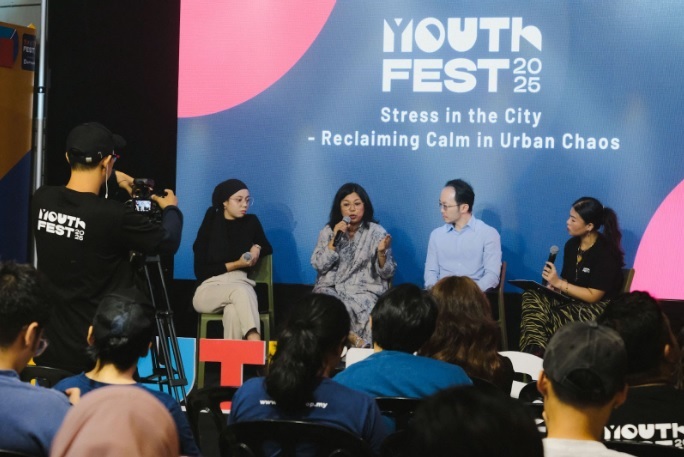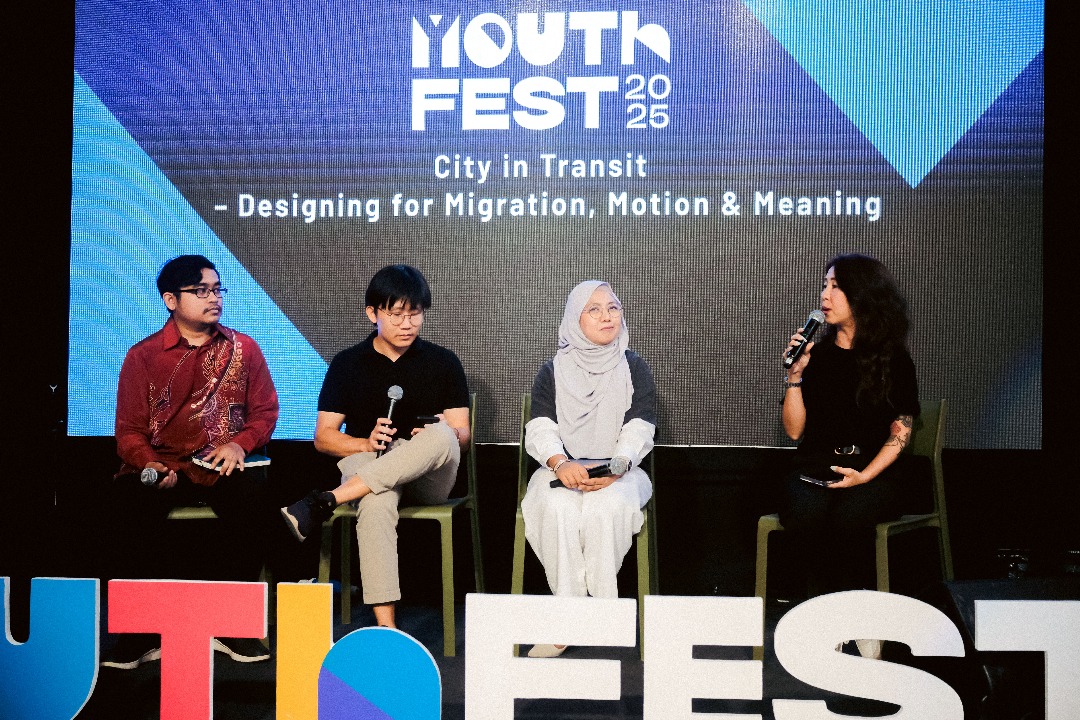
- “Our cities should build more pocket spaces for the youth, to allow them to gather with friends in a public space,” Nur Safuraa said.
KUALA LUMPUR (May 7): A sense of belonging is important for youths, especially in urban areas where many are seeking to define themselves. However, are we doing enough to promote the well-being of youths in our cities?
EdgeProp Malaysia recently held its inaugural YouthFest 2025 at APW Bangsar here. Among others, it curated a dialogue to explore “Stress in the City—Reclaiming Calm in Urban Chaos” with HELP University department of psychology associate professor Dr Eugene Tee, Think City senior associate Elisa Hanim, and Malaysian Institute of Architects (PAM)’s graduate committee PAM NXT member Ar Idr Nur Safuraa Abd Razak.
Read also
YouthFest 2025: Property investment tips from young investors
YouthFest 2025: Balancing independence and financial realities in homeownership
EdgeProp YouthFest 2025: Investment is about preserving wealth, not making quick profits
“Paradoxically, the [digital] technology that is meant to bring us together can instead lead to disconnection. There is still value in interacting and communicating with another individual in person,” Tee stressed.
He indicated that humans are meant to connect; our brains have a neural architecture that seeks out connections with others.
“A sense of belonging is the feeling that what we do matters, that we can contribute to our environments, with people coming together to create those spaces to live and interact, and to feel a sense of identification with the community.
“It's not just being in that place; it's also the realisation that I'm contributing something to make the place better, a sense that what I do matters,” Tee pointed out.
Designing youth-focused public spaces
Concurring, Nur Safuraa said there are some design elements that we should incorporate into public spaces, which Malaysia lacks.
Termed “third space” in architectural design, it is a refuge away from home and work—a place to comfortably gather with people and foster community engagement.
“There are some strategies through which we can incorporate design elements into public spaces—for example, building pocket spaces for people to allow them to gather with friends.
“We should also be aware that youths love the idea of freedom. Architectural designs should evolve from time to time and cater to the needs of the young generation,” she said.
In addition, Elisa indicated that in designing a park for the public, we cannot just think of the aesthetics. Instead, we can invite the community and get their thoughts on what they want, making the community a part of the design process.
Sharing a case study, she said after involving residents in the design process of the revitalisation of an old flat, a neglected space within it has been turned into a vibrant community area catering to diverse users. The residents have taken ownership by adding plants, maintaining the park, and even sharing community updates on social media.
“Community engagement and encouraging people to take ownership of the spaces that they occupy are key parts in creating a sense of belonging in public spaces,” Elisa stressed.
The 45-minute commute: a tipping point in travel behaviour

In many ways, our modern generation is built around mobility—job-hopping, education, the gig economy—we are always on the move. So, how should our cities evolve to support people who might not always stay long? YouthFest 2025 explored this in a conversation titled “City in Transit”.
Citing a mobility study in China, Transit Malaysia urban mobility researcher Aziff Azuddin said that there is a 45-minute tipping point for the decision-making process of a commuter.
“If you’re spending more than 45 minutes on your commute, your travel behaviour will change,” he said.
You will start to think that you need to move closer to your workplace to reduce travel time, or look for other jobs to reduce commuting anxiety, he explained.
“Most people don't want to waste time in traffic. And I think the good part about public transport is that it allows you the time to also be in transit while doing other things. Nevertheless, not everyone wants to be a super-commuter and stay on the train for more than an hour. It creates a lot of stress and anxiety, indirectly impacting your mental health,” Aziff said.
Socially-oriented spaces still lacking
More can be done in land use and policies, according to TPr Zuliana Mat Zawawi, a planning consultant representing the Malaysian Institute of Planners (MIP)’s youth wing.
“Residential or commercial developments are required to comply with certain requirements, such as allocating 5% to 10% of the area for green space and open space,” she said.
She also noted that awareness of designing more socially-oriented spaces is still lacking, as many projects are still being approved without taking into account how it can encourage or elevate communal well-being beyond incorporating nicer facilities.
“We are still trying very hard to meet the basic requirements for building green space and open space, and only a few projects have achieved this compliance,” Zuliana said.
Experiencing the city at slower speed
Bike Commute director Timothy Ong shared his experience of riding a bicycle in the city.
“Riding in a city is a privilege. When you ride through a city at different speeds, you experience it differently. If you’re riding at 60km per hour, your contact time with the buildings is brief. But when you ride slower, you get to smell the roti canai by the mamak, you feel the breeze on your face—that’s the beautiful part of riding,” he said.
However, he noted the challenges of cycling in the city.
“It takes a long time for me to get on a pedestrian bridge and come off the other side … Sometimes, unreasonable planning of these things can frustrate me,” Ong said.
He emphasised that mobility itself should be an amenity: “The act of moving should be a space for enjoyment and relaxation, a place where one feels comfortable. The experience of mobility shapes a place, and the way this landscape is transformed into an enjoyable space for those traversing it is crucial”.
Read also
YouthFest 2025: How can you begin your property investment journey without your parents’ money?
YouthFest 2025: Buying property in your 20s is more achievable than what you think, experts say
EdgeProp unveils Property Jar with Boost Bank, Sime Darby Property to offer upsized interest to help homebuyers save towards deposit
Want to have a more personalised and easier house hunting experience? Get the EdgeProp Malaysia App now.





